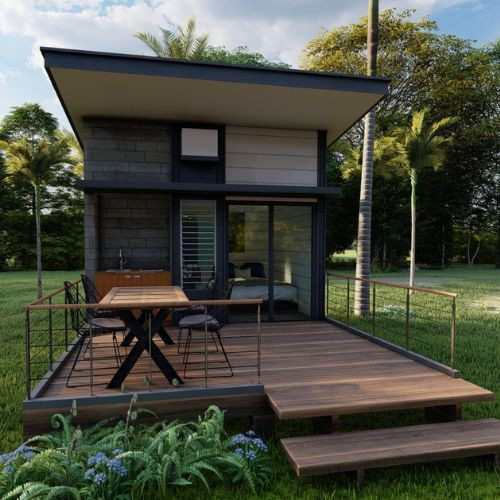Here's What SB9 Means For California Residents

New Laws Regarding Split Lots & ADUs
If you live in California, chances are you've caught wind of the buzz surrounding "lot-splits" and SB9. Here's a brief overview of what has been recently unfolding regarding local housing law.
January 1, 2022, California Senate Bill 9 (SB9) came into effect, designed to maximize housing potential on single-family residential lots. One of its key provisions is the lot-split, empowering homeowners to divide their single-family lots into two, subsequently expanding the potential for dwelling units and fostering more affordable housing options compared to larger single-family homes.
Contrary to common belief, SB9 is not just about building structures; it's a transformative measure addressing the state's pressing need for accessible housing. As a new construction and remodeling contractor in Mountain View, California, I've witnessed the potential this bill holds for homeowners and developers.
Under SB9, each lot resulting from a split can accommodate up to two dwellings, whether permitted as a duplex or a combination of a house and an Accessory Dwelling Unit (ADU) or Junior ADU (JADU). However, the primary focus is on creating more housing, not erasing existing units, as demolishing rental structures used within the last three years is prohibited.
What is an ADU?

Essentially, an ADU is a secondary living space on a property that can be used for a variety of purposes.
Split Lots & Permitting

For those considering selling a split lot, it's advised to build an SB9 duplex instead of an ADU, given current California laws prohibiting the separate sale of ADUs from the main house. This nuance is vital to long-term goals and financial planning.
Before delving into the lot-split process, homeowners and developers should be aware of the basic requirements outlined by SB9:
- A single-family lot can be split into two lots.
- Lot splits are a one-time occurrence; multiple splits are not allowed.
- Adjacent parcels split by the same entity or its representative are prohibited.
- The minimum lot size post-split is 1,200 sq ft.
- Split ratios cannot exceed 60/40, ensuring a balanced distribution.
- Lot splits are not exempt from mapping acts and other development fees.
- Local agencies can impose additional development standards.
To streamline the permitting process, the second dwelling must be ministerially approved, providing homeowners with an objective set of standards. Although certain challenges like parking requirements persist, SB9 simplifies and expedites the process, making it more accessible for homeowners.
Fees & Considerations

Despite the potential benefits, such as empowering homeowners to invest in their property and addressing the housing crisis, SB9 is not without its drawbacks. Development and impact fees, particularly for duplexes, can be significant. Parcel-mapping fees, access issues, and the requirement for owner occupancy are additional factors that homeowners and developers should consider.
As of now, SB9's impact remains limited, with various challenges requiring resolution. Studies show that SB9 projects to be "limited or nonexistent," attributing this to factors like high construction costs. However, a glimmer of hope emerges with Assembly Bill 1033, which could further enhance SB9's potential by allowing the sale of ADUs separately.
CALL TODAY
SB9 is a promising but complex avenue for homeowners and developers in Mountain View. While it requires careful consideration of challenges and potential amendments, it holds the key to expanding affordable housing options and transforming single-family neighborhoods. As the future unfolds, we remain cautiously optimistic about SB9's potential impact on California's housing landscape.
